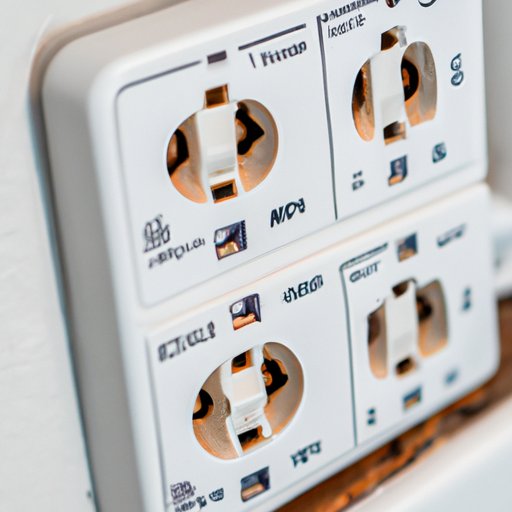Introduction
A circuit breaker trips when too much electricity is running through your system at once. When this happens, you may experience a sudden power outage in your home. It can be frustrating to figure out what caused the circuit breaker to trip so you can take steps to prevent it from happening again. In this article, we’ll explore how to find what is tripping your circuit breaker.
Check All Electrical Outlets for Overloading
One of the most common causes of a circuit breaker trip is an overloaded outlet. If too many devices are plugged into one outlet, the circuit can become overloaded and cause it to trip. To avoid this, you should check all of your outlets for signs of overloading.
Signs of an overloaded outlet include flickering lights, buzzing sounds, and warm outlets. If you notice any of these signs, you should unplug some of the devices from the outlet and plug them into other outlets in your home. This will help to properly distribute the load and reduce the risk of a circuit breaker trip.

Visually Inspect Circuit Breaker Panel
The next step is to visually inspect your circuit breaker panel. This is a box that contains all of the circuit breakers in your home. When you open the box, you should look for any signs of damage or wear and tear on the circuit breakers. If you see any signs of damage, you should replace the circuit breaker as soon as possible.
You should also identify the problem breaker. This is the breaker that has been tripped and is preventing your power from coming back on. Once you have identified the problem breaker, you can take steps to fix the issue.

Test Circuit Breakers with a Multimeter
If you suspect that a circuit breaker is faulty, you can use a multimeter to test it. A multimeter is a device that measures voltage, current, and resistance. To use a multimeter, you need to set it up properly. First, you should make sure that the multimeter is set to the “VAC” setting. This will ensure that you are measuring the correct type of voltage.
Next, you should connect the leads of the multimeter to the terminals of the circuit breaker. Once you have done this, you should read the results. If the multimeter reads 0 volts, then the circuit breaker is not working properly and needs to be replaced.

Investigate Potential Causes of an Electrical Surge
Another common cause of a circuit breaker trip is an electrical surge. An electrical surge is a sudden spike in voltage that can damage electronics and appliances. Common causes of electrical surges include lightning strikes, downed power lines, and faulty wiring. To protect your home from electrical surges, you should use a surge protector.
A surge protector is a device that absorbs excess voltage and prevents it from damaging your electronics. You should plug all of your electronics and appliances into the surge protector to protect them from electrical surges.
Identify Appliances or Devices Connected to the Circuit Breaker
Sometimes, a circuit breaker trip can be caused by an appliance or device that is connected to the circuit breaker. To determine if this is the case, you should locate the device in question and unplug it from the circuit breaker. If the circuit breaker does not trip again, then the device was likely the cause of the problem.
In order to prevent this from happening in the future, you should only plug devices that you know won’t draw too much power into the circuit breaker. This will help to reduce the risk of a circuit breaker trip.
Upgrade Your Home’s Electrical Wiring
If you find that your circuit breaker trips frequently, then you may need to upgrade your home’s electrical wiring. Upgrading your wiring can help to improve the efficiency of your home’s electrical system and reduce the risk of a circuit breaker trip. However, this is a job that should be left to a professional.
Hiring a licensed electrician is the best way to ensure that your home’s electrical wiring is installed correctly and safely. They will be able to recommend the best options for upgrading your wiring and make sure that it is installed properly.
Conclusion
Figuring out what is tripping your circuit breaker can be a challenge. However, by following the tips outlined in this article, you should be able to identify the cause of the problem and take steps to prevent it from happening again. These tips include checking all outlets for overload, visually inspecting the circuit breaker panel, testing circuit breakers with a multimeter, investigating potential causes of an electrical surge, identifying appliances or devices connected to the circuit breaker, and upgrading your home’s electrical wiring.
If you are still having trouble figuring out what is tripping your circuit breaker, it is important to contact a professional electrician. They will be able to diagnose the problem and provide you with the best solution.
(Note: Is this article not meeting your expectations? Do you have knowledge or insights to share? Unlock new opportunities and expand your reach by joining our authors team. Click Registration to join us and share your expertise with our readers.)
